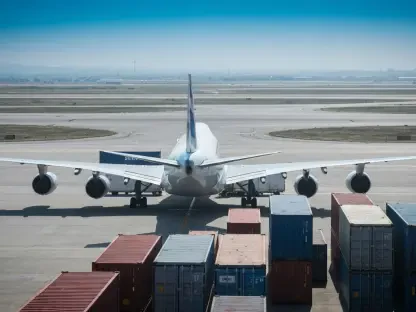Imagine a small e-commerce business, diligently packing orders to ship across the country, only to discover that their monthly shipping bill has spiked by thousands of dollars due to a subtle policy tweak by major carriers like UPS and FedEx. This scenario is becoming a reality for countless shippers as UPS and FedEx roll out synchronized changes to their dimensional weight calculations, effective as of August 18 this year. These adjustments, involving rounding up fractional measurements to the nearest inch, are poised to reshape the cost structure of logistics. This market analysis dives into the implications of these policy shifts, exploring current trends, financial impacts, and future projections for the shipping industry. The purpose is to equip businesses with the insights needed to adapt to a landscape where every inch of a package carries a heavier price tag.
Decoding Market Shifts in Dimensional Weight Pricing
The logistics sector is witnessing a pivotal transformation with UPS and FedEx aligning their dimensional weight policies to standardize measurement practices. Historically, dimensional weight pricing was introduced to balance the cost of shipping bulky, lightweight packages that consume significant cargo space. Until recently, certain rounding practices occasionally favored shippers by allowing fractional dimensions to be rounded down under specific thresholds. However, the current policy change marks a departure from such leniency, as both carriers now round up every fraction to the next whole inch, ensuring higher billable dimensions for packages.
This alignment reflects a broader market trend toward revenue optimization amid rising operational expenses like fuel and labor costs. Carriers are increasingly focusing on precision in cost allocation, moving away from approximations that might benefit shippers. The synchronized nature of this update between two industry giants suggests a competitive yet collaborative dynamic, where standardization helps maintain market equilibrium while boosting carrier profitability. For businesses reliant on ground shipping, this shift underscores the need to reassess packaging and budgeting strategies to align with stricter measurement norms.
Financial Impacts and Industry Ripples
The Rising Cost of Fractional Inches
The most immediate effect of the new dimensional weight policy is the financial strain it imposes on shippers. With measurements rounded up to the nearest inch, a package previously billed at 11 inches in length now counts as 12 inches, inflating the calculated weight and subsequent shipping fees. Industry estimates suggest that a business shipping a moderate volume of 2,500 packages monthly could face an additional annual cost exceeding $30,000 due to this rounding adjustment alone. This cost escalation poses a significant challenge, particularly for smaller enterprises with limited financial flexibility.
Beyond the direct impact, this change compounds the burden of already rising ground shipping rates this year. Additional fees and surcharges introduced by both carriers further squeeze profit margins for shippers. The benefit to UPS and FedEx is clear, as they secure a revenue boost from packages that previously might have fallen under lower billing thresholds. Shippers, however, must now navigate a market where logistics expenses are becoming a more dominant factor in operational planning, pushing many to seek cost mitigation strategies.
Disparities Across Regions and Sectors
The financial repercussions of the policy shift are not uniform, with distinct challenges emerging based on geographic and industry-specific factors. Shippers in remote or rural areas, where delivery costs are inherently higher due to distance and lower shipment density, may experience a disproportionate increase in expenses. The added dimensional weight costs exacerbate an already costly logistics framework, potentially limiting market access for businesses in these regions.
Similarly, certain sectors face unique pressures from this adjustment. E-commerce companies dealing with lightweight, irregularly shaped goods—such as apparel or decorative items—are likely to see steeper cost hikes compared to industries shipping denser, more compact products. This uneven impact often goes unaddressed in broader market discussions, yet it highlights how smaller or niche players bear a heavier burden. Understanding these disparities is crucial for developing targeted strategies to manage the rising tide of shipping expenses across diverse market segments.
Projections for the Logistics Cost Landscape
Looking ahead, the synchronized policy update by UPS and FedEx signals a continuing trend toward tighter standardization in logistics pricing structures. As operational challenges like fluctuating fuel prices and labor shortages persist, carriers are expected to further leverage dimensional weight adjustments as a primary tool for revenue generation. This could set a precedent for other players in the market to adopt similar policies, potentially creating an industry-wide norm over the next few years, from this year to 2027.
Technological advancements also play a role in shaping future cost structures. Automated measurement systems are likely to become more prevalent, enhancing accuracy in package assessments but leaving little room for shipper leniency. While regulatory intervention remains unlikely at present, sustained pushback from shippers over perceived cost burdens could prompt discussions around pricing fairness. Market analysts anticipate that competitive dynamics will drive ongoing refinements in how dimensional weight is calculated, urging businesses to stay agile in a landscape where precision increasingly dictates profitability.
Reflecting on Market Insights and Strategic Pathways
Looking back, the analysis of the dimensional weight policy changes by UPS and FedEx revealed a critical turning point for the shipping industry, with the rounding up of measurements driving up costs for shippers across various sectors. The financial strain, compounded by regional and industry-specific challenges, underscored the urgency for adaptive measures. Beyond the immediate impact, projections indicated a future where standardization and technology would further redefine cost structures, challenging businesses to innovate.
For strategic next steps, shippers are encouraged to prioritize packaging optimization, focusing on minimizing dimensions without sacrificing product integrity. Exploring partnerships with regional carriers or third-party logistics providers offers a potential buffer against escalating fees from major carriers. Additionally, investing in data-driven tools to streamline shipping operations emerges as a vital consideration for maintaining competitiveness. These actionable insights provide a roadmap for navigating a transformed logistics environment, ensuring businesses can turn cost pressures into opportunities for efficiency and growth.









